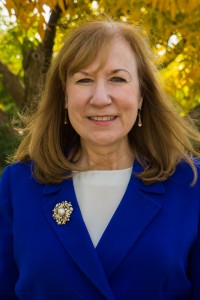Tags
Related Posts
Share This
New Provost in Town
This year, SFUAD welcomes a new interim provost, Debra J. Tervala, M.Ed., J.D. She sat down with Jackalope Magazine to discuss her experience of campus thus far and her plans.
Jackalope Magazine: How do you like Santa Fe?
Debra Tervala: My very first time in Santa Fe was in May and I fell in love with it as soon as we got off the plane…literally. So, it was a pretty instantaneous message from the universe.

Interim Provost Debra Tervala joined Santa Fe University of Art & Design from Walden University in August, tasked with the responsibility of overseeing academic programs and renewing SFUAD’s accreditation Photo by Luke E. Montavon/The Jackalope
JM: Where ya’ from, how’d ya get here?
DT: I was born in South Carolina, but I’ve lived in Maryland most of my life and I moved to Santa Fe from Baltimore.
I’m coming to this position as an interim provost from Walden University and at Walden I was the vice president for the College of Education and Leadership and the vice president for the College of Undergraduate Studies.
JM: What’s your relationship with Laureate?
DT: Walden is a part of the Laureate network, so I had been at Walden for about 2 1/2 years and they had recruited me from another position that was outside of the Laureate network.
This is my first experience working within Walden, but I’ve worked in higher education administration for about 20 years with public and private institutions; two-year, four-year and doctoral so, you know, online, face-to-face, all of the above!
JM: What exactly does an interim provost do?
DT: (chuckles) Well, the term provost is sort of synonymous in many ways with what [Gerry Snyder’s] title was, the Vice President of Academic Affairs. I’m doing pretty much what Gerry did—which means that, you know, I make sure that the academic programs are structured and run the way that they need to be so that when students graduate they have the skills that we say they’re supposed to have when they graduate. And, help the chairs with the budget process and prioritize what we need to prioritize within a given year and sort of articulate academic policies that have to deal with either admissions or with plagiarism or those kinds of things.
Right now, this year is particularly important for —I’ll call it S.F.U.A.D.—I know that everyone calls it “SFUAD.” But, I know it’s a particularly important year for this institution because we are up for reauthorization of our regional acceptance and the site visit will take place in February and so right now I’m finishing up a lot of the work that was begun months ago and was worked on pretty intensely over the summer, which is why you see all these books all over the place (motions around her office) to finish up a self-study report that we have to send to the Higher Learning Commission. They use that report to come in and come on campus and talk to faculty and staff and everybody—board members, community members; just to confirm what we say about ourselves .
JM: Was the upcoming accreditation a deciding factor in your decision to come to SFUAD?
DT: In a way, yeah. I’m kind of an accreditation geek. I’ve done a lot of work with that in other institutions and helping previous institutions get ready for their visit. I wouldn’t say there’s a lot of us in this world that like to do that, but it’s something that I’ve got experience in and expertise and, yeah, it did. It did attract me.
JM: What’s your favorite thing about SFUAD so far?
DT: Oh, goodness! I think that it’s what the university represents in the art and design world. I’ve worked in a lot of institutions— that I’ve alluded to—but I’ve never worked at one that was solely focused on art and design. I’ve worked on ones that had a component of a comprehensive institution, but not one that was focused on that. And so I think that it’s an opportunity for me to learn a whole lot more about things I didn’t know anything about. But it’s also a way to offer, I guess, my respect for the work that both the faculty and the students do in areas that are so inherently critical to what it means to be a human being, really. So that, I think, is one of my favorite things so far.






 Jackalope Magazine is the student magazine of Santa Fe University of Art and Design. Building on the interdisciplinary nature of our education, we aim to showcase the talent of our university and character of our city.
Jackalope Magazine is the student magazine of Santa Fe University of Art and Design. Building on the interdisciplinary nature of our education, we aim to showcase the talent of our university and character of our city.
Recent Comments